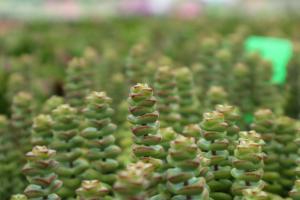Why is my tomato plant leaves dying?
Tomato plants are a popular choice among home gardeners due to their ease of cultivation and bountiful harvest. However, it can be frustrating to watch your tomato plant's leaves start to wilt and die, particularly if they had previously been lush and healthy. Fortunately, there are several common reasons why tomato plant leaves may be dying, and addressing these issues can help you restore your plant's vigor and improve your harvest.
Inadequate watering
One of the most common causes of dying tomato plant leaves is inadequate watering. Tomato plants require consistent moisture in order to thrive, particularly during the hot summer months when evaporation rates are high. If your tomato plants are not receiving enough water, their leaves may begin to wilt and eventually die off. On the other hand, if you overwater your tomato plants, the roots may become waterlogged and die, leading to a similar result.
To combat this issue, ensure that you are watering your plants consistently and adequately, checking the soil moisture regularly. Implement a regular watering schedule or use a self-watering system to ensure that your plants are receiving the appropriate amount of water.
Pests or disease
Another common cause of tomato plant leaf die-off is pest or disease infestations. Tomato plants are vulnerable to a variety of pests, including aphids, whiteflies, and spider mites. These pests can cause serious damage to your plants, manifesting as holes in the leaves or sticky residue on your plants. Be sure to monitor your plants regularly for signs of pest infestation and take appropriate measures to eradicate the pests, such as using organic insecticides.
In addition to pests, tomato plants are also susceptible to a range of fungal and bacterial diseases, such as fungal leaf spot or bacterial speck. These diseases can lead to leaf discoloration, blotches, or grayish-black patches. To prevent these issues, use clean tools and planting materials, rotate your crops regularly, and maintain a clean garden environment.
Nutrient deficiencies
Tomato plants require a range of nutrients in order to grow and produce fruit. If your plants are not receiving enough of these nutrients, their leaves may begin to die off. Common nutrient deficiencies in tomato plants include nitrogen, phosphorus, and potassium. Nitrogen deficiency may be indicated by yellowed leaves, while phosphorus deficiency may show up as purple or brown discoloration on the leaves.
To combat nutrient deficiencies, consider adding a balanced fertilizer to your soil or using a foliar spray to directly address the issue. In addition, consider testing your soil to ensure that it contains a full spectrum of nutrients and adjust as necessary.
Environmental factors
Finally, environmental factors such as temperature, humidity, and light can also impact the health of your tomato plants. If your plants are exposed to extreme heat, cold, or drought, their leaves may begin to wilt or turn yellow. Similarly, if your plants are not receiving enough light, their leaves may become crowded and eventually die off.
To mitigate these issues, ensure that your plants are receiving adequate sunlight and are not exposed to extreme temperatures. If necessary, provide shade or use a cold frame to protect your plants. Additionally, consider using a grow light to supplement natural light if your plants are growing in an area with insufficient sunlight.
Overall, there are a range of reasons why your tomato plant leaves may be dying. By monitoring your plants regularly and addressing issues as they arise, you can help ensure that your tomato plants are healthy and productive throughout the growing season.

 how many times do yo...
how many times do yo... how many planted tre...
how many planted tre... how many pine trees ...
how many pine trees ... how many pecan trees...
how many pecan trees... how many plants comp...
how many plants comp... how many plants can ...
how many plants can ... how many plants and ...
how many plants and ... how many pepper plan...
how many pepper plan...































